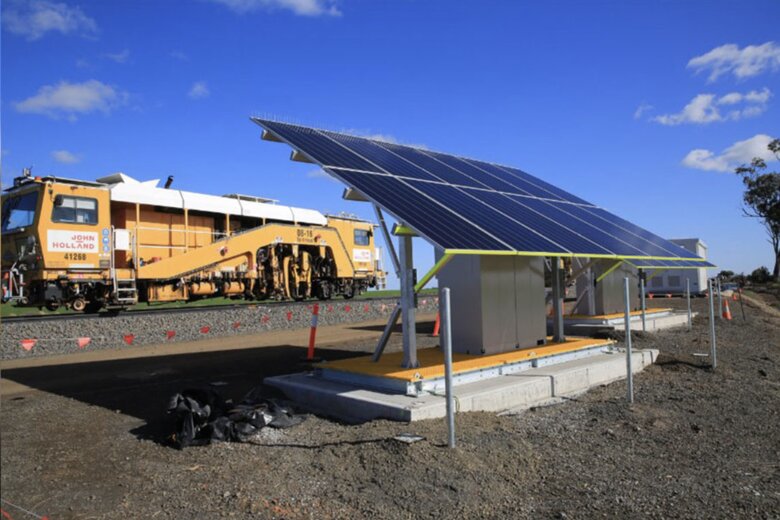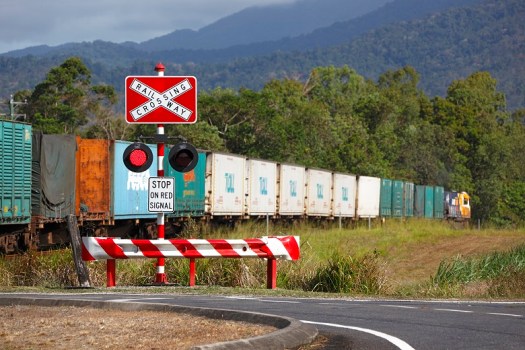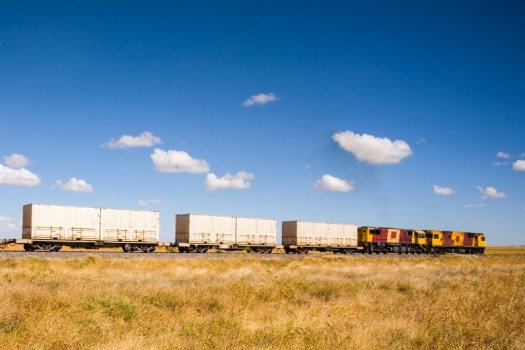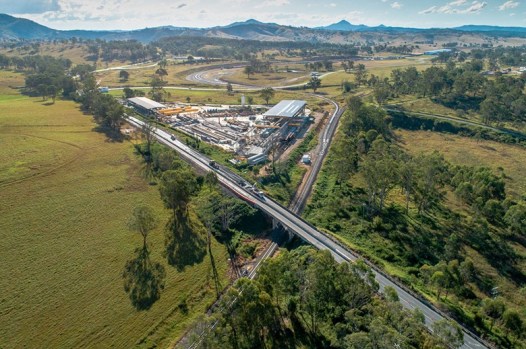
The agency responsible for delivering the Inland rail has approved the use of solar signalling following a successful trial in northern NSW.
The 1,700km freight rail project will connect Melbourne to Brisbane via regional Victoria, NSW and Queensland to keep pace with increasing freight demands.
It has been broken into 13 separate projects with completion slated for 2027.

The ARTC announced this week that solar powered signals will be used at 82 sites between Albury in NSW and Gowrie in Queensland following a successful trial at Coolleearlee, 50 kilometres from Moree.
The Coolleearlee system is currently being used to support the crossing loop that will operate in the area, allowing trains going in opposite directions to pass each other.
‘Delivering power to rural signalling systems can be a real challenge so the successful completion of this solar powered system in Coolleearlee is a great outcome,” Inland Rail project manager Matt Brown said in a statement.
The the 24-7 system has a battery that provides ten days of backup, with remote monitoring used to reduce maintenance visits.
The ARTC says wider use of solar systems will eliminate the need to use local power infrastructure or acquire easements to transmit power to the proposed rail corridor, which would impact local landholders.
Acting Chief Executive Rebecca Pickering said the organisation wanted to ensure sustainability was at the forefront of the rail project.
‘Using solar power rather than mains power for the signalling system will deliver an environmentally friendly and sustainable solution to reliably power the signalling system, reducing the impact to local communities, the environment and the cost of Inland Rail,” she said.
Using solar power has saved ARTC around $300,000 in costs, Ms Picking said, as well as more than $10,000 a year in operational electricity costs.
This was mostly from not having to build a new transmission line to connect to the electricity network, and a reduction in trackside infrastructure associated with mains equipment.
The federal government in February announced new appointments to the ARTC board, saying ‘capability gaps’ in the organisation needed to be plugged.
An independent review of the Inland Rail project by Dr Kerry Schott is yet to be released by the government.
The review raised significant concerns about the project’s governance and delivery, transport and infrastructure minister Catherine King said last month.
Comment below to have your say on this story.
If you have a news story or tip-off, get in touch at editorial@governmentnews.com.au.
Sign up to the Government News newsletter



